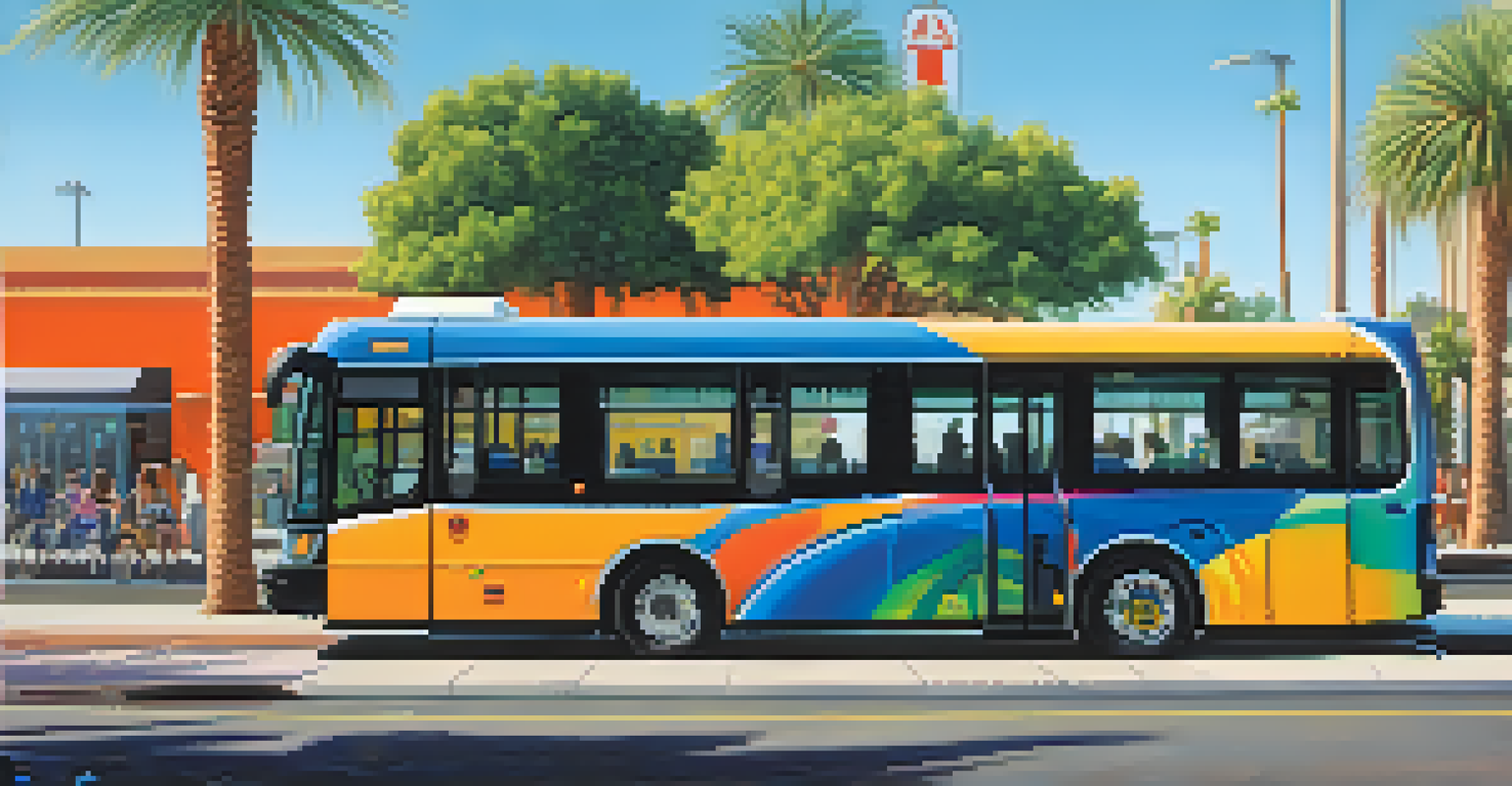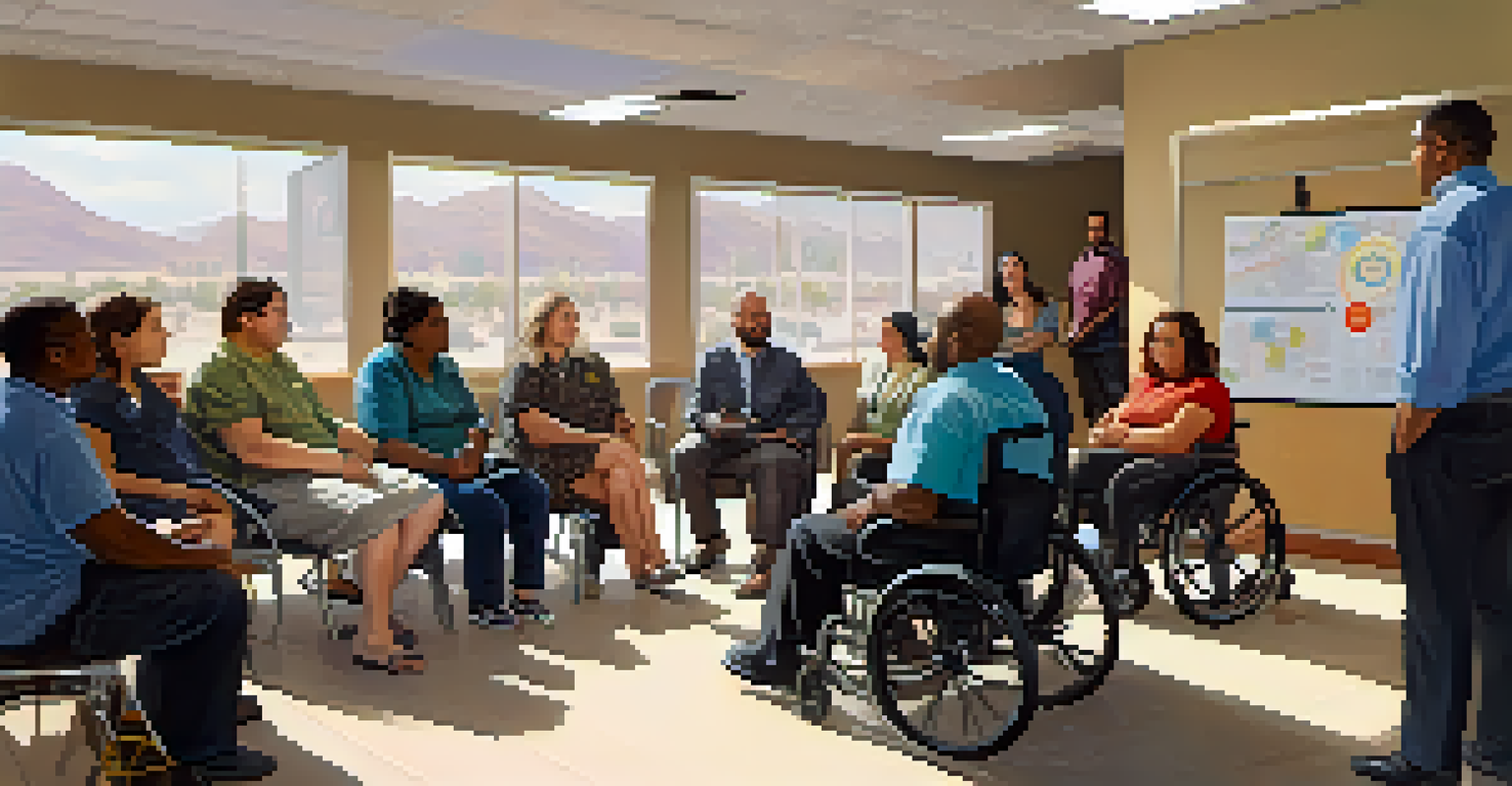Public Transit Accessibility: A Historical Perspective in Phoenix

Early Days: Transit Accessibility in Phoenix (1900-1950)
In the early 20th century, public transit in Phoenix was a modest affair, primarily consisting of streetcars and limited bus services. Accessibility for individuals with disabilities was virtually nonexistent, as the focus was mainly on getting the general population from point A to point B. For many, especially those with mobility challenges, transportation was a significant barrier to participating in daily life.
Accessibility allows us to tap into everyone’s potential.
During this period, the infrastructure lacked ramps, designated seating, and even reliable schedules, making it challenging for anyone with physical limitations to navigate the city. As the population began to grow, the need for a more inclusive public transit system became apparent. However, it would take societal changes and advocacy for the rights of individuals with disabilities to spark meaningful improvements.
By the late 1950s, the conversation around accessibility was gaining momentum, but tangible changes were still slow to materialize. Grassroots movements began to emerge, advocating for better access and awareness, setting the stage for future reforms in public transportation.
Legislative Changes: The 1960s and 1970s
The 1960s marked a turning point in the fight for disability rights across the United States, including in Phoenix. The passage of the Civil Rights Act of 1964 and the subsequent legislation laid the groundwork for more inclusive public policies. Advocates pushed for changes that would directly impact public transit, emphasizing the need for accessible options for people with disabilities.

In 1973, the Rehabilitation Act introduced Section 504, which prohibited discrimination based on disability in federally funded programs. This was a significant victory for advocates, as it compelled local governments to make their public transit systems more accessible. In Phoenix, this meant that transit agencies began to reassess their existing infrastructure and services to meet the new legal requirements.
Progress in Transit Accessibility
Phoenix has made significant strides in public transit accessibility, evolving from minimal services for individuals with disabilities to more inclusive options.
While the changes were promising, they often faced challenges in implementation, with cities grappling with budgeting and compliance. Nevertheless, the growing awareness of accessibility needs began to reshape the public transit landscape in Phoenix, paving the way for future enhancements.
The Americans with Disabilities Act (ADA) of 1990
The passage of the Americans with Disabilities Act (ADA) in 1990 was a watershed moment for public transit accessibility in Phoenix and nationwide. This comprehensive civil rights law mandated that all public transit systems must be accessible to individuals with disabilities. For Phoenix, this meant significant upgrades to buses, rail systems, and stations to comply with the new regulations.
The greatest challenge for people with disabilities is not the disability itself, but the barriers created by society.
As a result, the city began implementing wheelchair-accessible buses and installing curb cuts and ramps at transit stops, which greatly improved mobility options for individuals with disabilities. Additionally, transit agencies started providing specialized services like paratransit, which catered specifically to those who were unable to use regular bus services due to their disabilities. This change marked a shift toward recognizing the importance of inclusive transportation.
Despite the progress made under the ADA, challenges remained. Ensuring consistent accessibility across all transit routes continued to be a priority, as advocates worked to hold transit agencies accountable for their commitments to the disability community.
Technological Advances and Modern Accessibility Efforts
As technology has advanced, so too have the solutions for improving public transit accessibility in Phoenix. The introduction of real-time tracking apps and digital information systems has made it easier for all users, especially those with disabilities, to navigate the transit system. These tools provide essential information about bus schedules, routes, and any service disruptions, promoting independence for riders.
Moreover, the integration of features such as audio announcements and visual displays on buses and at stations has made it more inclusive for individuals with visual and hearing impairments. These advancements reflect a growing understanding of the diverse needs of the community and a commitment to providing equitable access to public transportation.
Advocacy Drives Change
Grassroots movements and advocacy efforts have been crucial in raising awareness and pushing for legislative reforms to improve transit access for all.
However, the reliance on technology also brings challenges, such as ensuring that all users have equal access to these tools. Continuous training for transit staff and ongoing community engagement are essential to maintain and enhance accessibility as technology evolves.
Community Involvement and Advocacy
Community involvement has played a crucial role in shaping public transit accessibility in Phoenix. Local advocacy groups have been instrumental in raising awareness about the challenges faced by individuals with disabilities. Their efforts have included organizing events, conducting surveys, and engaging in dialogue with city officials to push for necessary changes in the transit system.
These grassroots movements have fostered a sense of empowerment among individuals with disabilities, encouraging them to voice their needs and experiences. By sharing personal stories, advocates have successfully illustrated the importance of accessible transit options and the impact they have on the daily lives of many residents.
Additionally, partnerships between advocacy groups and transit agencies have led to collaborative efforts aimed at improving services and infrastructure. This ongoing dialogue helps ensure that the voices of those who rely on public transit are heard and that solutions are tailored to meet their unique needs.
Current Challenges and Future Directions
Despite the progress made, public transit accessibility in Phoenix still faces several challenges. Budget constraints often limit the extent to which transit agencies can improve services and infrastructure. Moreover, the growing population and increased demand for public transit add pressure to ensure that accessibility measures keep pace with these changes.
Another challenge is the need for consistent training for transit staff to ensure they are equipped to assist individuals with diverse disabilities. Ongoing education and awareness campaigns can help foster a more inclusive environment where all passengers feel welcome and supported. Addressing these challenges requires a collaborative effort from the community, local government, and transit agencies.
Technology and Future Solutions
The integration of technology in public transit is enhancing accessibility, but ongoing training and community engagement are essential for sustainable improvements.
Looking ahead, the future of public transit accessibility in Phoenix will likely hinge on innovative solutions and continued advocacy. By leveraging technology, engaging with the community, and prioritizing inclusivity, the city can create a public transit system that serves everyone, regardless of their abilities.
Conclusion: A Vision for Inclusive Transit in Phoenix
As we reflect on the history of public transit accessibility in Phoenix, it is clear that significant strides have been made, yet there is still work to be done. The journey toward an inclusive transit system has involved the efforts of dedicated advocates, supportive legislation, and technological advancements. However, it's essential to continue prioritizing the needs of individuals with disabilities to ensure their full participation in the community.
A vision for the future of public transit in Phoenix includes not only compliance with accessibility standards but also a commitment to exceeding them. This means actively seeking feedback from the disability community and adapting services to meet their evolving needs. By fostering an environment of collaboration, Phoenix can lead by example in creating a truly inclusive public transit system.

Ultimately, accessible public transit is not just about providing transportation; it's about empowering individuals to engage fully in their communities, access opportunities, and lead fulfilling lives. Together, we can work toward a future where public transit in Phoenix is accessible, reliable, and welcoming for all.